A walk in the history of Manduria to meet the Messapians, a proud and rich people. Let’s follow their footprints in the Archeological Park of Manduria.
We pass through the railing and a well welcomes us.
The branches of an almond tree come out of it. It seems a fairy-tale picture, a tree inside a well, and it’s the
physical transposition of something we’ve already seen. But where? Just a
moment ago, at the entrance! The emblem of Manduria shows a well from which the
foliage of an almond tree comes out. At each side of the well there are the
letters F and M. Originally they stood for Famiglie
Manduriane (Families of Manduria), referring to the Librone Magno, where all the families of Manduria were listed.
Later, those initials were reinterpreted with Fons Manduriae (Fount of Manduria).
There it is,
the Fount of Manduria, which welcomes the visitors of the park. This tree also
is the main character of some legends. One for all, the one of golden almonds.
Messapian women used to hang golden objects on its branches, as a pledge so
their men could come back home from war safe and sound. Under the sunlight, the
jewelry shone so much that foreigners thought that this land was so rich that
nature itself produced gold. It’s one of the many myths that makes us
understand how flourishing the society of the Messapians and their land were,
at the point of being often a desire for conquest of other peoples.
The Plinian Fount
Although this well is represented on the emblem and
has become one of the symbols of the town, the real fount is underneath it.
Anna guides and accompanies us to a staircase that goes in an underground
cavity.
It’s called like this because Pliny the Elder wrote about
it in his Naturalis Historia,
describing it like a spring where the water level never diminished, even though
the people of Manduria took from here their water supplies. They saw this thing
as something miraculous and magic. After having felt the magic of the place,
our guide explains the reason of this phenomenon: there are three tanks in the
cave, linked one to each other with underground springs: they create a natural
system that works like communicating vessels. That’s why the sound of water
seems to come from everywhere but any defined place. At the time of the
Messapians, this place was dedicated to water deity, the element associated to the
feminine. They said that thanks to the water of this spring, Messapian women
were so strong that they could lift the blocks of the walls (huge, as we’ll see
later) and they hair was as resistant as ropes. They’re surely legends, but
they give the idea of how important the fount was for the Messapians: in an
area like Puglia, where surface water is scarce (but it’s abundant
underground), the place where it came to surface became sacred.
With the passing of time, also Grand tour travelers
went in Manduria after having read of the Plinian Fount. That was the period
when they believed that this water was even miraculous and that could heal the
sick. There’s a proof of this: the drawing realized by Ducros in the 18th
century, when the artist accompanied some travelers through the Kingdom of the
two Sicilies. It shows three figures descending in the cave carrying a
stretcher.
This is just the beginning of our travel to discover
the Messapians. After having dove in the legendary history of one of the most
important symbols of the town, in this atmosphere of pagan sacredness, we can
return to the surface and know better the Messapian people.
The Messapian Walls and the moat
We move toward the Walls of the town. This is the
larger megalithic park of the area: although Manduria was a medium-sized town,
here we can find the most important archeological evidences.
The Walls of Manduria ensured the security, the political
and administrative independence of the town, defending it from the attacks of
Spartan, who tried to conquer the town in order to expand the territory of the
Chora of Taranto.
The defensive complex was composed of three mighty
sets of walls and a moat that opens in three points, in correspondence with the
streets that connected Manduria with Lecce, Brindisi and Oria, the main towns
with which it had commercial relationships. These gaps represented vulnerable
points, but it was worth losing a part of the defense to ensure those
flourishing exchanges and the archeological evidences are the witness of how
fruitful they were. We know that in correspondence with those streets there
were some doors: the rocks themselves say it with the holes of the jambs and of
the central casement. Indeed, they say that each opening was controlled by a
double door, strengthening those weak points. Our walk in history continues in
the moat. Anna descends some stairs along the internal walls, slips in an
opening in the wall and comes out in the moat. We follow her.
It was a secret passage that in the past was closed
with a stone slab, which was moved in case of danger. This makes us understand
that the moat wasn’t full of water (we said that there’s not much of it in
Puglia). So, why are there so many fossilized oysters on the lower part of the
walls? They date back the era when this area of Puglia wasn’t emerged yet and
still decorate these rocks. We keep walking in this green lawn until we reach a
point where the moat gets narrower, in a defined and geometrical way, like if
those who were digging turned around something. What could be so important to
sacrifice part of the defensive efficiency of the moat?
It’s possible that there could be a watchtower. There,
where it seems that there’s a weak point, actually there’s a strengthening.
Nothing was left to chance! Let’s continue our walk until we reach one of the
most important point of the archeological park, and one of the richest in
knowledge, the cemetery nucleus.
Our walk to discover Messapian civilization and the
history of Manduria continues in the second part of this tale.

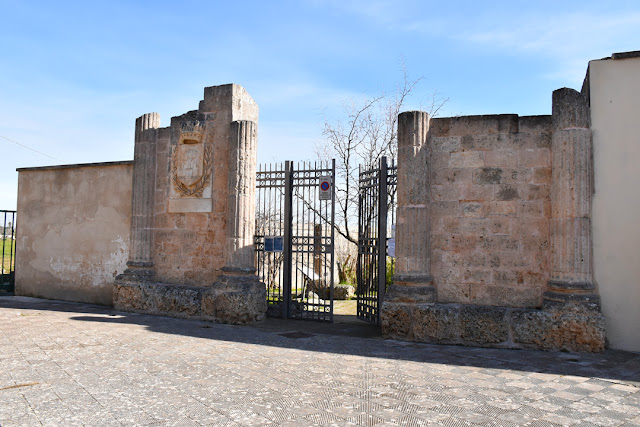
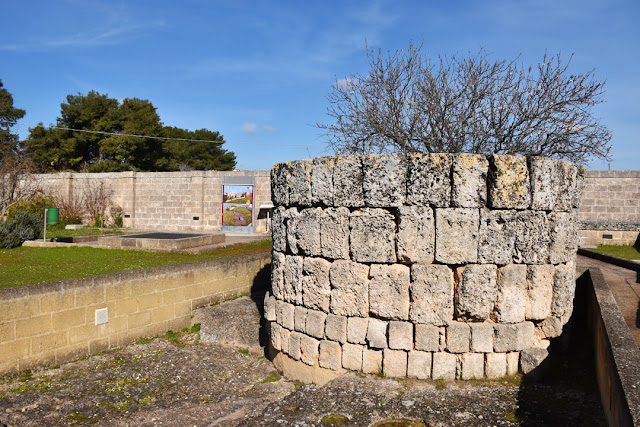

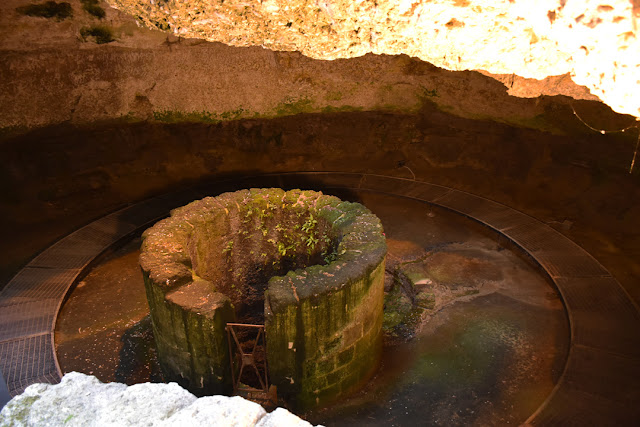

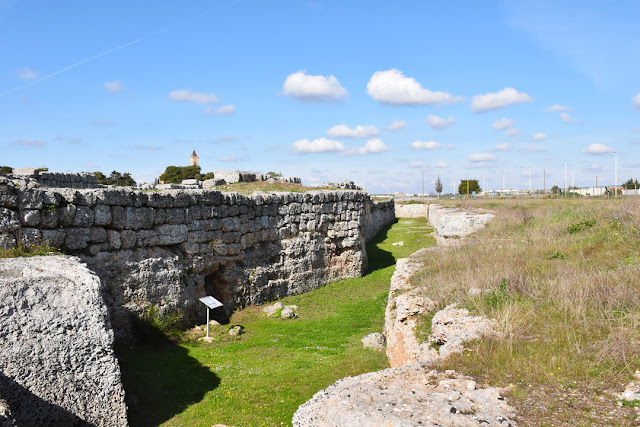
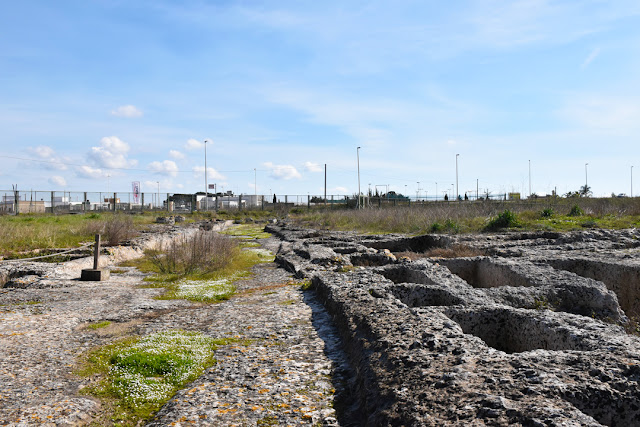
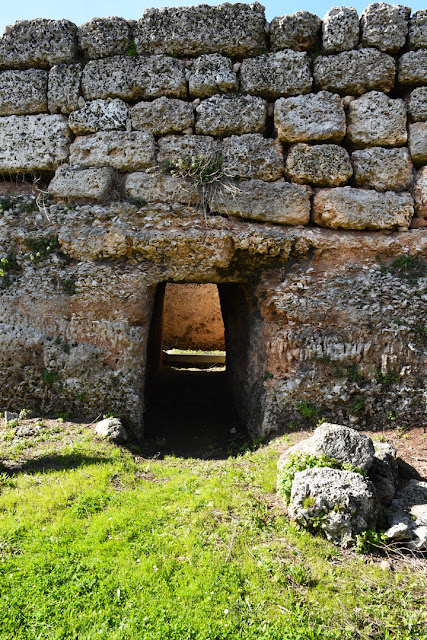


Commenti
Posta un commento
Feel free to leave a comment!
I would be glad to know your opinion! ;)
Thank you! :)